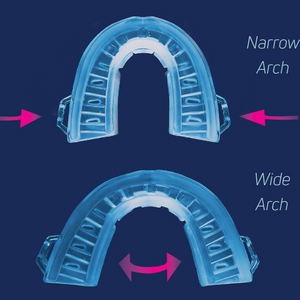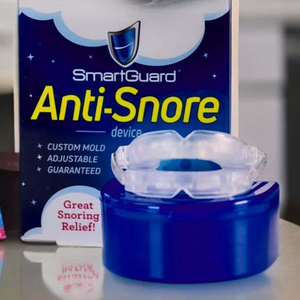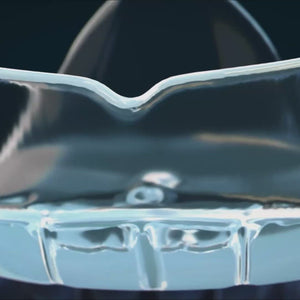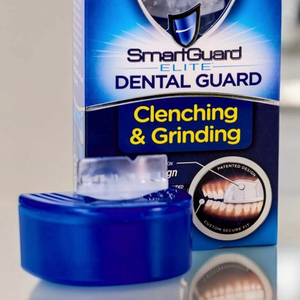Sep 30, 2025
DO YOU HAVE IDIOPATHIC HYPERSOMNIA?
DO YOU HAVE IDIOPATHIC HYPERSOMNIA?
Idiopathic hypersomnia (IH) is a rare and complex neurological sleep disorder characterized by excessive daytime sleepiness, despite getting a full night’s sleep. The term idiopathic means the cause is unknown, which makes diagnosis and treatment particularly challenging.
WHAT ARE THE KEY FEATURES OF IH?
Persistent sleepiness: People with IH often sleep more than 11 hours in a 24-hour period and still feel unrefreshed.
Sleep inertia: Waking up can be extremely difficult, often accompanied by confusion, grogginess, and poor coordination—sometimes called “sleep drunkenness.”
Unrefreshing naps: Unlike other sleep disorders, naps don’t help relieve the fatigue.
Automatic behavior: Individuals may perform tasks (like writing or driving) without conscious awareness and later have no memory of doing them.
WHAT ARE THE POSSIBLE TRIGGERS OF IH?
Although the exact cause is unknown, researchers suspect the following:
Genetic factors or mutations affecting brain signaling
Immune system dysfunction targeting the nervous system
Triggers like head trauma, viral infections, anesthesia, or sudden changes in sleep schedule
IH can severely affect as follows:
Work or school performance
Social relationships
Safety (e.g., falling asleep while driving)
Mental health due to chronic fatigue and isolation
HOW IS IH DIAGNOSED AND TREATED?
Diagnosis involves ruling out other sleep disorders through the following:
Sleep studies (polysomnography, multiple sleep latency test)
Sleep journals and actigraphy
Epworth Sleepiness Scale assessments
There’s no known cure, but treatment focuses on symptom management:
Medications: Stimulants (modafinil, amphetamines), sodium oxybate, or GABA antagonists
Cognitive Behavioral Therapy for Hypersomnia (CBT-H) to improve coping and sleep hygiene
HOW DOES IDIOPATHIC HYPERSOMNIA DIFFER FROM NARCOLEPSY?
Idiopathic hypersomnia (IH) and narcolepsy are often confused because they both cause excessive daytime sleepiness, but they’re distinct in several important ways. Here's a breakdown to help clarify:
Core Differences at a Glance
|
Feature |
Idiopathic Hypersomnia (IH) |
Narcolepsy (Type 1) |
|
Daytime sleepiness |
Yes |
Yes |
|
Sleep attacks |
Yes |
Yes |
|
Cataplexy |
No |
Yes (sudden muscle weakness) |
|
Sleep paralysis |
Sometimes |
Often |
|
Hallucinations |
Sometimes |
Often (hypnagogic/hypnopompic) |
|
Nighttime sleep |
Long, deep, but unrefreshing |
Fragmented, frequent awakenings |
|
Naps |
Not refreshing |
Often refreshing |
|
Sleep drunkenness |
Severe and prolonged |
Present but less intense |
|
REM sleep onset |
Normal |
Abnormally fast (within 15 minutes) |
|
Cause |
Unknown (possibly GABA-related) |
Often due to hypocretin deficiency |
WHAT ARE THE BIOLOGICAL DIFFERENCES?
Narcolepsy Type 1 is linked to a deficiency in hypocretin, a neuropeptide that regulates wakefulness and REM sleep.
IH may involve an overactive GABA system, which promotes deep sleep and sedation.
Diagnostic Clues
Multiple Sleep Latency Test (MSLT) is key:
Narcolepsy shows 2+ sleep-onset REM periods (SOREMPs).
IH shows no SOREMPs, but still rapid sleep onset.
HOW ARE THEY TREATED?
Both may be treated with stimulants (e.g., modafinil), but:
Narcolepsy may also require sodium oxybate or pitolisant for cataplexy and REM-related symptoms.
IH often responds less predictably to stimulants and may benefit from GABA-targeting therapies.
DIAGNOSIS CAN BE TRICKY
Some symptoms overlap, and early stages can look similar. In fact, IH and narcolepsy Type 2 (without cataplexy) are especially hard to distinguish without sleep studies.
If you’d like, I can help you explore how these conditions affect sleep architecture or guide you through the diagnostic process step-by-step.
WHAT ABOUT HYPOGLYCEMIA?
Idiopathic hypersomnia (IH) and rebound hypoglycemia are completely different phenomena, rooted in separate systems of the body. Here's a breakdown to help you see how they diverge:
The person who sleeps excessively during the daytime may not have IH, but be suffering from rebound hypoglycemia—the tendency to crash and sleep after a meal, especially one with a great deal of simple carbohydrates. But, this involves the person’s metabolic hormones, such as insulin, and blood sugar surges. It is not IH.
HERE ARE THE DIFFERENCES BETWEEN IH AND HYPOGLYCEMIA
Idiopathic Hypersomnia (IH): A Sleep-Wake Disorder
System affected: Central nervous system
Core issue: Excessive daytime sleepiness despite adequate or prolonged nighttime sleep
Symptoms:
Sleep inertia (grogginess upon waking)
Long, unrefreshing naps
Brain fog, confusion, and automatic behavior
Cause: Unknown; possibly linked to abnormal GABA signaling or genetic predisposition
Diagnosis: Sleep studies (MSLT, polysomnography), sleep journals, Epworth Sleepiness Scale
Treatment: Stimulants (modafinil, amphetamines), sodium oxybate, GABA antagonists, CBT-H
REBOUND HYPOGLYCEMIA IS A BLOOD SUGAR PHENOMENON
System affected: Endocrine/metabolic system
Core issue: High morning blood sugar caused by a nighttime drop in glucose that triggers a hormonal surge
Symptoms:
Morning hyperglycemia
Possible overnight hypoglycemia symptoms (sweating, nightmares, confusion)
Fatigue and sleeping after a meal
Cause: Overcorrection of low blood sugar during sleep by hormones like cortisol, adrenaline, and glucagon
Diagnosis: Continuous glucose monitoring (CGM), nighttime blood sugar checks
Treatment: Adjusting insulin dosage, meal timing, or switching to an insulin pump
HOW ARE THEY DIFFERENT?
|
Feature |
Idiopathic Hypersomnia (IH) |
Rebound Hypoglycemia (Somogyi Effect) |
|
System involved |
Neurological |
Endocrine/metabolic |
|
Primary symptom |
Excessive sleepiness |
Morning high blood sugar |
|
Underlying mechanism |
Unknown (possibly GABA-related) |
Hormonal response to nocturnal hypoglycemia |
|
Diagnosis method |
Sleep studies |
Glucose monitoring |
|
Treatment approach |
Wake-promoting agents, CBT-H |
Insulin adjustment, dietary changes |
These two conditions don’t overlap in terms of physiology or treatment, but they both underscore how subtle imbalances—whether in sleep regulation or glucose control—can ripple into major disruptions in daily life.







